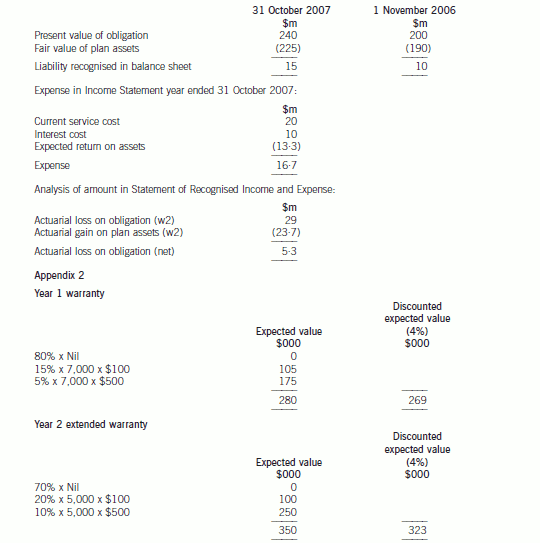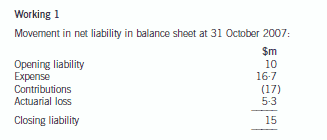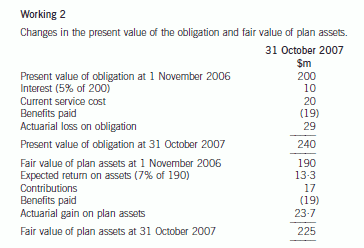注意!ACCA报考条件放宽,无专业要求!
发布时间:2020-03-25
2020年ACCA考试一直是备注瞩目,ACCA是含金量很高的证书,因此吸引了一大批想要报考的在校生和已就业人员。但是很多人不确定自己到底能不能报考ACCA,ACCA报考条件高不高?本次51题库考试学习网为大家提供了详细的ACCA报名条件信息,一起来看一下吧!
报名注册ACCA学员,具备以下条件之一即可:
1、教育部认可的高等院校在校生(本科在校),顺利完成大一的课程考试,即可报名成为ACCA的正式学员;
2、凡具有教育部承认的大专以上学历,即可报名成为ACCA的正式学员;
3、未符合1、2项报名资格的申请者,年满16周岁的可以先申请参加FIA(Foundations in Accountancy)基础财务资格考试。在完成FAB(基础商业会计)、FMA(基础管理会计)、FFA(基础财务会计)3门课程后,可以豁免ACCAF1-F3三门课程的考试,直接进入ACCA技能课程的考试。
了解到自己是否能参加ACCA考试之后,满足条件的同学还需要知道相关的注册流程,今天51题库考试学习网带大家熟悉一下注册流程。
一、注册报名。
1、准备注册相关材料。
2、在全球官方网站进行注册。
(1)上传注册资料扫描文件;
(2)将纸质注册资料递交至ACCA代表处。
3、注册费用。
采用线上传资料方式的必须在线支付。
4、查询注册进度。
(1)线上完成全部注册约2周;
(2)纸质注册约6周。
5、下面介绍一下学生所需准备的注册材料。
(1)中英文在校证明(原件必须为彩色扫描件);
(2)中英文成绩单(均需为加盖所在学校或学校教务部门公章的彩色扫描件);
(3)中英文个人身份证件或护照(原件必须为彩色扫描件、英文件必须为加盖所在学校或学校教务部门公章的彩色扫描件)。
二、注册时间。
ACCA考试注册报名没有时间要求,但是注册时间早,考试时间就早。注册完成后必须在官方考试报名截止前获得审核,审核通过后才可以参加考试报名。
三、注册费用缴纳。
ACCA的注册费、年费、考试费用支持双币信用卡及银联及支付宝付款。
四、信息变更。
注册后您的通讯地址、EMAIL地址及手机号码如果发生变更,请您登录ACCA英文官方网站和中文官方网站MY ACCA,及时在线更新。特别提醒,为了方便英国总部与您联系,电话一项请您最好提供有效的手机号码,避免不必要的麻烦。
以上就是51题库考试学习网带来的资讯,含金量这么高的ACCA,符合条件的同学可以进行报名、备考了。更多相关资讯请关注51题库考试学习网。
下面小编为大家准备了 ACCA考试 的相关考题,供大家学习参考。
(b) Describe five main barriers to an effective appraisal interview. (10 marks)
(b) The appraisal system should be well constructed and fair to both the individual and the organisation. However, there are a number of barriers, often because employees see the appraisal as one or more of the following:
Confrontation due to lack of agreement on performance, badly explained or subjective feedback, performance based on recent events or disagreement on longer term activities.
Judgement, the appraisal is seen as a one sided process based entirely on the manager’s perspective.
Chat is the worst of all worlds. The appraisal interview is seen as an informal, loosely constructed and badly managed conversation without purpose.
Unfinished business is when the appraisal is not seen as part of a continuing process of performance management.
An annual event when the appraisal is seen as largely irrelevant and simply an event to set annual targets that quickly become out of date.
A system of bureaucracy based on forms devised solely to satisfy the organisation’s human resources department so that its main purpose, that of identifying individual and organisation performance and improvement, is forgotten.
(b) (i) Discusses the principles involved in accounting for claims made under the above warranty provision.
(6 marks)
(ii) Shows the accounting treatment for the above warranty provision under IAS37 ‘Provisions, Contingent
Liabilities and Contingent Assets’ for the year ended 31 October 2007. (3 marks)
Appropriateness of the format and presentation of the report and communication of advice. (2 marks)
(b) Provisions – IAS37
An entity must recognise a provision under IAS37 if, and only if:
(a) a present obligation (legal or constructive) has arisen as a result of a past event (the obligating event)
(b) it is probable (‘more likely than not’), that an outflow of resources embodying economic benefits will be required to settle
the obligation
(c) the amount can be estimated reliably
An obligating event is an event that creates a legal or constructive obligation and, therefore, results in an enterprise having
no realistic alternative but to settle the obligation. A constructive obligation arises if past practice creates a valid expectation
on the part of a third party. If it is more likely than not that no present obligation exists, the enterprise should disclose a
contingent liability, unless the possibility of an outflow of resources is remote.
The amount recognised as a provision should be the best estimate of the expenditure required to settle the present obligation
at the balance sheet date, that is, the amount that an enterprise would rationally pay to settle the obligation at the balance
sheet date or to transfer it to a third party. This means provisions for large populations of events such as warranties, are
measured at a probability weighted expected value. In reaching its best estimate, the entity should take into account the risks
and uncertainties that surround the underlying events.
Expected cash outflows should be discounted to their present values, where the effect of the time value of money is material
using a risk adjusted rate (it should not reflect risks for which future cash flows have been adjusted). If some or all of the
expenditure required to settle a provision is expected to be reimbursed by another party, the reimbursement should be
recognised as a separate asset when, and only when, it is virtually certain that reimbursement will be received if the entity
settles the obligation. The amount recognised should not exceed the amount of the provision. In measuring a provision future
events should be considered. The provision for the warranty claim will be determined by using the expected value method.
The past event which causes the obligation is the initial sale of the product with the warranty given at that time. It would be
appropriate for the company to make a provision for the Year 1 warranty of $280,000 and Year 2 warranty of $350,000,
which represents the best estimate of the obligation (see Appendix 2). Only if the insurance company have validated the
counter claim will Macaljoy be able to recognise the asset and income. Recovery has to be virtually certain. If it is virtually
certain, then Macaljoy may be able to recognise the asset. Generally contingent assets are never recognised, but disclosed
where an inflow of economic benefits is probable.
The company could discount the provision if it was considered that the time value of money was material. The majority of
provisions will reverse in the short term (within two years) and, therefore, the effects of discounting are likely to be immaterial.
In this case, using the risk adjusted rate (IAS37), the provision would be reduced to $269,000 in Year 1 and $323,000 in
Year 2. The company will have to determine whether this is material.
Appendix 1
The accounting for the defined benefit plan is as follows:



(b) Examine how adopting a Six Sigma approach would help address the quality problems at UPC.
(10 marks)
(b) In many ways Six Sigma started out as a quality control methodology. It focused on measurement and the minimisation of
faults through pursuing Six Sigma as a statistical measure of some aspects of organisational performance. However, Six Sigma
has developed into something much more than a process control technique. It includes a problem-solving process called
DMAIC and a comprehensive toolkit ranging from brainstorming to balanced scorecards and process dashboards. It also has
defined team roles for managers and employees, often with martial arts names such as Black Belt, Green Belt and Master
Black Belt.
Six Sigma was first used in organisations in the early 1990s. However, it was its adoption and promotion by Jack Welch, the
CEO of GE that brought Six Sigma wider publicity. He announced that ‘Six Sigma is the most important initiative GE has ever
undertaken’. As Paul Harmon comments, ‘Welch’s popularity with the business press, and his dynamic style, guaranteed that
Six Sigma would become one of the hot management techniques of the late 1990s’.
Six Sigma uses an approach called DMAIC in its problem solving process. This stands for Define, Measure, Analyse, Improve
and Control. Three aspects of this are considered below in the context of how they would address the problems at UPC.
Defining the problem
Part of defining the problem is the identification of the customer. It is important to understand what customers really want
and value and one of the main themes of Six Sigma is its focus on the customer. Six Sigma explicitly recognises the ‘voice of
the customer’ (VOC) in its approach. In the UPC situation quality requirements are currently defined by the physical condition
of the goods and by the alignment of the image. However, this may be a limiting view of quality because there is no evidence
of any systematic investigation of the requirements of the customer. Solving these problems may not lead to any significant
long-term gain; they may be quickly replaced by other ‘quality issues’. Furthermore, the customer is also perceived in a limited
way. These quality requirements are in the eye of the gift shop owner who is interested in saleable products. The end customer
– the consumer – who buys and uses the product may have other requirements which can also be addressed at this time.
By considering the VOC the problem and scope of the project becomes re-defined and the solution of the problems potentially
more valuable.
Measurement
Measurement is fundamental to Six Sigma. This includes the gathering of data to validate and quantify the problem. The
creation of the inspection team was based on initial evidence about an increase in breakages. This needs to be quantified.
The inaccurate printing of the image had been quantified as 500 units per month, out of the 250,000 shipped out of the
company. This equates to a failure rate of 0·2%, so that 99·8% of items are shipped with a correctly aligned image. This
sounds quite reasonable but it still raises issues and complaints that have to be dealt with, as well as creating wastage costs
of $10,000 per month. The problem is that even a relatively low percentage of defects can lead to a lot of unhappy customers.
Aiming for Six Sigma would reduce defects down to about one faulty item per month, reducing the wastage cost to $20.
Analysis
Analysis is concerned with understanding the process to find the root cause. Six Sigma focuses on processes and their
analysis. Analysis concerns methods, machines, materials, measures, Mother Nature and people. The alignment problem
needs investigation to find out what causes the imaging machine to irregularly produce misaligned images. Management
currently appear to blame the machine but it may be due to the way that certain people load the machine. The analysis of
the breakages is particularly important. It is unclear at present where these breakages occur (for example, are some of the
items broken before they leave UPC’s despatch facility) or are they all broken in transit? Neither is it understood why the
breakages occur. Management appear to blame the packers for packing incorrectly and not following the correct method.
However, it may be that the material is just not strong enough to withstand heavy handling by couriers who are outside the
control of UPC. Additionally, the breakages may be due to some manufacturing problem or raw material imperfection in the
items that break. Six Sigma stresses understanding the problem before solving it.
Although DMAIC has been selected as the framework for the sample answer, focusing on other aspects of Six Sigma would
be acceptable – as long as they are presented in the context of the UPC scenario.
3 You are the manager responsible for the audit of Lamont Co. The company’s principal activity is wholesaling frozen
fish. The draft consolidated financial statements for the year ended 31 March 2007 show revenue of $67·0 million
(2006 – $62·3 million), profit before taxation of $11·9 million (2006 – $14·2 million) and total assets of
$48·0 million (2006 – $36·4 million).
The following issues arising during the final audit have been noted on a schedule of points for your attention:
(a) In early 2007 a chemical leakage from refrigeration units owned by Lamont caused contamination of some of its
property. Lamont has incurred $0·3 million in clean up costs, $0·6 million in modernisation of the units to
prevent future leakage and a $30,000 fine to a regulatory agency. Apart from the fine, which has been expensed,
these costs have been capitalised as improvements. (7 marks)
Required:
For each of the above issues:
(i) comment on the matters that you should consider; and
(ii) state the audit evidence that you should expect to find,
in undertaking your review of the audit working papers and financial statements of Lamont Co for the year ended
31 March 2007.
NOTE: The mark allocation is shown against each of the three issues.
3 LAMONT CO
(a) Chemical leakage
(i) Matters
■ $30,000 fine is very immaterial (just 1/4% profit before tax). This is revenue expenditure and it is correct that it
has been expensed to the income statement.
■ $0·3 million represents 0·6% total assets and 2·5% profit before tax and is not material on its own. $0·6 million
represents 1·2% total assets and 5% profit before tax and is therefore material to the financial statements.
■ The $0·3 million clean-up costs should not have been capitalised as the condition of the property is not improved
as compared with its condition before the leakage occurred. Although not material in isolation this amount should
be adjusted for and expensed, thereby reducing the aggregate of uncorrected misstatements.
■ It may be correct that $0·6 million incurred in modernising the refrigeration units should be capitalised as a major
overhaul (IAS 16 Property, Plant and Equipment). However, any parts scrapped as a result of the modernisation
should be treated as disposals (i.e. written off to the income statement).
■ The carrying amount of the refrigeration units at 31 March 2007, including the $0·6 million for modernisation,
should not exceed recoverable amount (i.e. the higher of value in use and fair value less costs to sell). If it does,
an allowance for the impairment loss arising must be recognised in accordance with IAS 36 Impairment of Assets.
(ii) Audit evidence
■ A breakdown/analysis of costs incurred on the clean-up and modernisation amounting to $0·3 million and
$0·6 million respectively.
■ Agreement of largest amounts to invoices from suppliers/consultants/sub-contractors, etc and settlement thereof
traced from the cash book to the bank statement.
■ Physical inspection of the refrigeration units to confirm their modernisation and that they are in working order. (Do
they contain frozen fish?)
■ Sample of components selected from the non-current asset register traced to the refrigeration units and inspected
to ensure continuing existence.
■ $30,000 penalty notice from the regulatory agency and corresponding cash book payment/payment per the bank
statement.
■ Written management representation that there are no further penalties that should be provided for or disclosed other
than the $30,000 that has been accounted for.
声明:本文内容由互联网用户自发贡献自行上传,本网站不拥有所有权,未作人工编辑处理,也不承担相关法律责任。如果您发现有涉嫌版权的内容,欢迎发送邮件至:contact@51tk.com 进行举报,并提供相关证据,工作人员会在5个工作日内联系你,一经查实,本站将立刻删除涉嫌侵权内容。
- 2020-01-03
- 2020-01-09
- 2020-01-03
- 2020-01-10
- 2020-02-23
- 2019-01-06
- 2020-01-10
- 2020-01-10
- 2020-04-08
- 2020-01-03
- 2020-01-10
- 2020-02-22
- 2020-09-03
- 2020-02-23
- 2020-01-09
- 2020-02-28
- 2020-01-10
- 2019-01-06
- 2020-01-10
- 2020-02-05
- 2020-02-23
- 2020-01-10
- 2020-01-10
- 2020-04-30
- 2020-01-09
- 2020-02-26
- 2020-01-03
- 2020-02-23
- 2019-01-06
- 2020-01-03